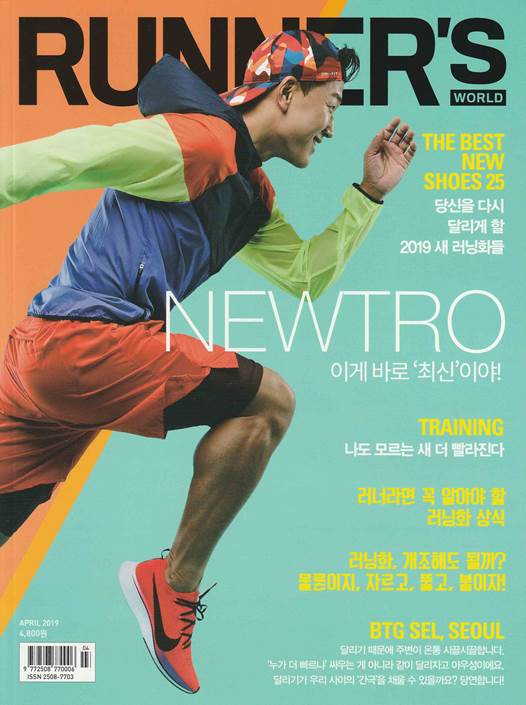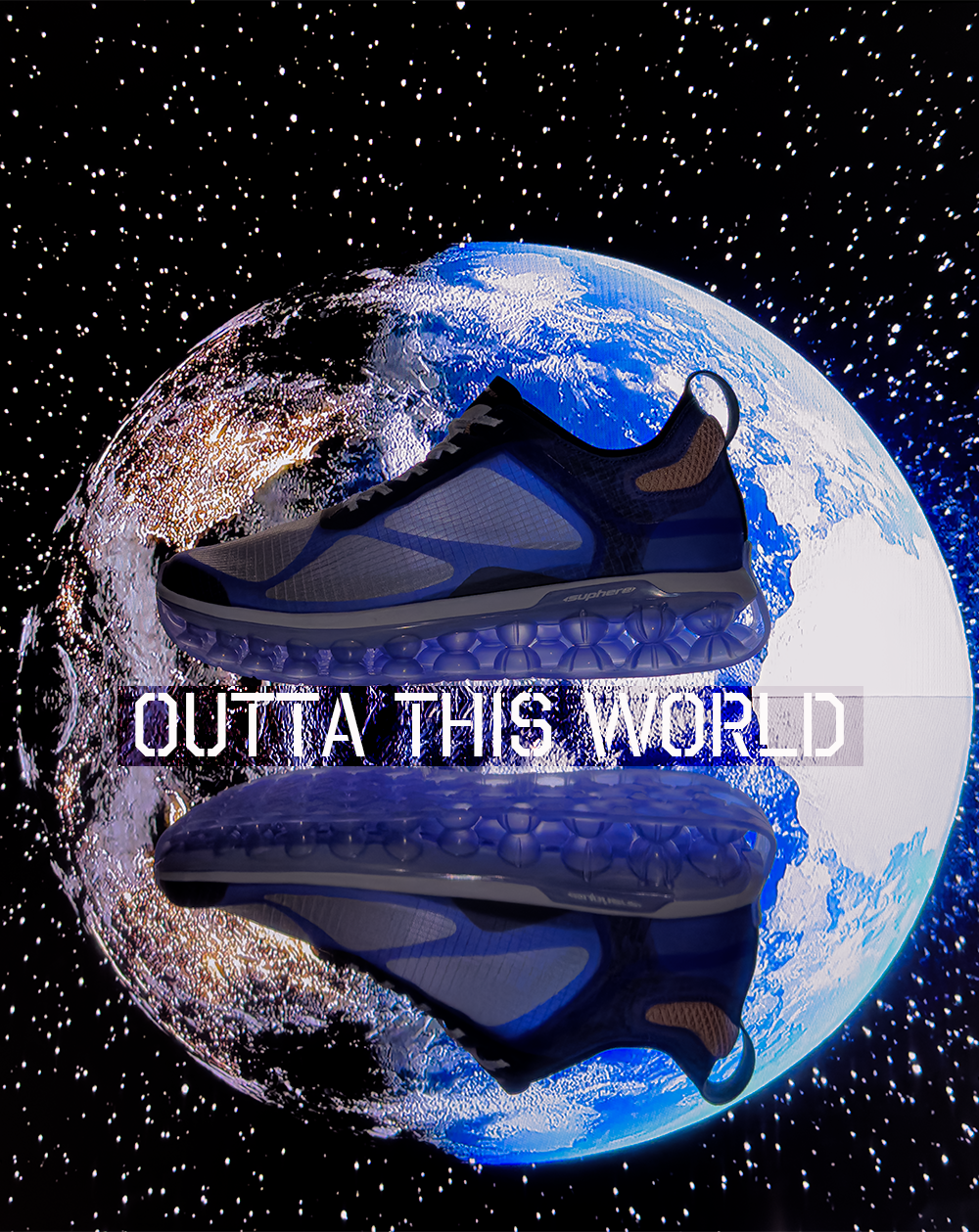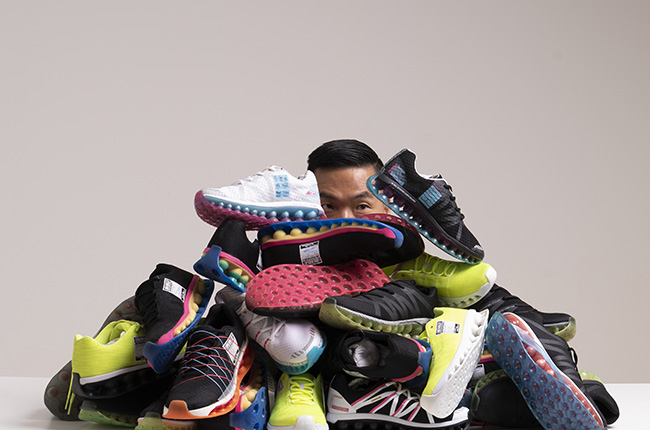-
SUPHERE
means 'SUPREMACY of SPHERE’.
-
-
GOORV 3 _ Vader Black
-
$149.00
$141.45
$101.45
-
-
GOORV 3 _ Silver Light
-
$149.00
$141.45
$71.45
-
-
GOORV 3 _ Cosmic Yellow
-
$149.00
$141.45
$81.45
-
-
GOORV 3 _ Aura Blue
-
$149.00
$141.45
$81.45

- Runner's world_October 2020
- The first running shoe created by Suphere is GOORV-001 RO-70 (Running Only, where 70 represents the level of cushioning hardness). The core technology of GOORV-001 is "Dual Hemisphere Cushioning." Simply put, it involves the contraction and expansion of the two hemispheres in the midsole. When a tennis ball is dropped onto a basketball, it bounces significantly higher than when the tennis ball is dropped alone. Ho Dong, the creator, explains this phenomenon as a "dual elastic collision." The theoretical validation of the GOORV-001 cushioning was conducted through Dr. Lee Jae-hyung, an engineering Ph.D. and a patent attorney.The purpose of the GOORV-001 midsole is to collapse completely when the runner exerts excessive force on the foot. This design aims to mitigate the risk of injuries caused by inefficient running, where the foot forcefully strikes the ground. Additionally, the collapsing of the midsole serves as a kind of "alarm" that allows runners to check their running form. In simple terms, if the impact between the foot and the ground during running is less intense, the collapsing of the midsole will be less noticeable, whereas if the impact is greater, the sensation of the midsole collapsing will be more pronounced. In summary, the GOORV-001 features a "flat point" (a point where the arch structure is completely collapsed, allowing the runner to feel the ground). It was intentionally designed for runners to perceive this point and pay attention to avoid touching it while running, enabling more efficient running.GOORV-001 stands out in terms of its durability and breathability. The lifespan of running shoes is generally around 500 kilometers. After covering this distance, the cushioning and other features tend to diminish significantly. However, GOORV-001 is different. Even if it is punctured by a sharp object, the cushioning remains unaffected. This is made possible by the use of a material called "STPV" (TPV with increased elasticity and a rubber-like grip), which maintains the hardness of regular TPU while enhancing elasticity, creating the hemisphere. Additionally, it features over 300 ventilation holes for excellent breathability, known as "Super-Vent" ventilation insole. Furthermore, there are 36 holes in the midsole and upper arch structure, preventing sweat and moisture buildup and keeping the feet dry while running.Whatever it may be, creating something is difficult and challenging. Among them, the process of making running shoes is particularly complex. It requires a detailed understanding of various characteristics of the human body and applying them to the product, ensuring that the features have a positive impact on a wide range of people. In other words, it is important to keep in mind that if running shoes are made poorly, someone who wears those shoes could get hurt. The cost involved in this process is also significant, and all of this is being undertaken by CEO Ho Dong Sung alone.From the perspective of an ordinary person like me, I don't quite understand what you are currently doing. Firstly, the fact that you left a good job to work on your own stands out. There are people who dream of working at sports brands like Nike or Adidas. In a previous interview with "Runner's World," you mentioned not being able to pursue the work you truly wanted to do, and it seems that this was the main reason for doing your own.Many people dream of working at Nike or Adidas, including myself when I was younger. However, after achieving that dream, I got lost a bit. It wasn’t the disappointment of the brand, but rather disappointment in my dream itself. I had held onto a grand fantasy. It was similar to what many people feel in their jobs and workplaces. After a few years of working in that environment, one day I thought, "I can do this my way!” Looking back, it was baseless and reckless confidence, but it felt like some kind of "sign." The fact that I couldn't fully pursue what I wanted to do at the company was certainly one of the reasons.How much does it cost to make a single sample?The cost of making a small mold alone can easily exceed thousand dollars. 3D printed model costs hundreds, and for making a prototype pair, you need three molds, as well as the upper material and the last. It costs approximately 15~20,000. dollars. Once you have the mold and upper material, you can make several pairs of samples.From my perspective, it's unimaginable to bear the cost of tens of thousands of dollars just for making prototypes. Unless you have exceptional mental strength, it seems unlikely that you would dare to venture into it. Did you have separate income while making running shoes on your own? If not, how did you manage to cover the development costs over six years?As for how I generated income, I provided design consulting services to various sports brands. I also had savings from my previous job. I gathered all these resources to cover the costs. When I didn't have enough money, so if there was a shortage of funds, I would work on other projects for a few months or even sell my car. The cost of patenting was even higher than the sample development cost. I had to file for patents not only domestically but also internationally, and the costs vary by country. I'm not sure if I have strong or weak mental fortitude, I just had unwavering conviction that "it will definitely work."What was the most challenging thing for you while making running shoes?I didn't feel particularly troubled or difficult while making the Suphere shoes. Let me rephrase the question: What made you the happiest? Of course, it was when I put them on and ran. I have tried on and compared almost all the running shoes and sneakers that have been released since the 1980s. It has been a part of my life. But there was nothing better than the dual hemisphere cushioning I created in the Groove-001. I was so thrilled when I wore the first prototype of the product. The future of the product became so vivid to me.Some runners have commented that the current shoe from Suphere has a strong "conceptual" nature. In other words, its unique shape catches their attention, but they wonder if it will be accepted in the market. What are your thoughts on this? Do you have any plans to address the mentioned marketability concerns or counterarguments regarding its lack of marketability?I didn't intentionally make it "conceptual." It is a physical and scientific design solution. I don't see the shape of these running shoes as a futuristic concept based on a distant future. I am also curious whether Groove-001 will have marketability. We haven't opened the lid yet. However, I believe the marketability depends on how well the brand and customers communicate. It's a matter of convincing people about this unique midsole and how much customers can understand and accept it. In that regard, I think Suphere can create new marketability.It's the trend to incorporate carbon plates in running shoes. Was this aspect not considered when creating Suphere?Ho Dong: I don't particularly like following trends. Putting carbon plates in shoes has been done before. It's been over 20 years since they introduced basketball shoes and many others. However, I wasn't interested in the carbon plates themselves. Running shoes with carbon plates are mainly for propulsion. Since Suphere has a completely different concept, I naturally have no interest in them for now. Do you have any plans to stop making running shoes in the future?I have no plans of that sort. We have plans set for at least the next 10 years. I don't have any intention of stopping even after 10 years at all.

- Runner's world_April 2019
- When did you first develop a love for running?I've actually been into running since my teenage years. It started as a part of my warm-up and cardio routine, but it wasn't until I joined the Nike running team that I began proper running training. During my third 5km run, I experienced an incredible "runner's high" that truly made me fall in love with running. From that point on, I delved into studying various aspects of running, such as different foot strikes, gait analysis, ground contact time (GCT), pronation, and running shoe analysis.Did you conduct any market research before designing your products?Interviewee: Absolutely! I found inspiration for my designs and also conducted market research to understand the target market. I had the opportunity to meet countless runners, from the NY Marathon expo to Santa Monica Beach, Seoul, Tokyo, Shanghai, Berlin, London, Barcelona, and more. One of the best experiences was meeting runners at marathon expos, as I could interact with a diverse range of runners in one place over just a few days. I received valuable feedback from them, and it was incredible to recommend different types of running shoes based on their needs. These interactions also shaped my mindset as a designer, understanding the importance of meeting the people who will actually wear the shoes I design.Apart from running shoes, you've designed a variety of sneakers. How has your experience in designing running shoes influenced your design career?Without a doubt, my experience in designing running shoes has had a significant impact on my overall design career. Running is a fundamental movement in almost all sports, so the knowledge and expertise I gained while developing running shoes have proven invaluable across different athletic footwear categories. Whether it's basketball or tennis shoes, understanding the mechanics of running has been key to creating effective designs.You initially took up running to design running shoes. What's the difference between experiencing running as a running shoe designer versus not being a runner yourself?Being a runner myself has provided me with a deeper understanding of the connection between the foot and the shoe. When I run, I can feel which parts of my foot are stimulated, stressed, or even hurting. It's important to note that you don't have to be an elite runner, achieving impressive times or distances, to design exceptional running shoes. However, by trying out different running shoes and comparing them in shorter runs of 1-2km, you can definitely notice the differences and understand the pros and cons of each design. Feedback from professional runners also plays a vital role during the development stage. Having personal running experience enables me to better grasp these nuances and create shoes that cater to specific needs. To put it in perspective, consider a chef who tries different dishes versus one who relies solely on customer feedback—having firsthand experience undoubtedly enhances the quality of the end product.











